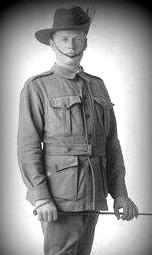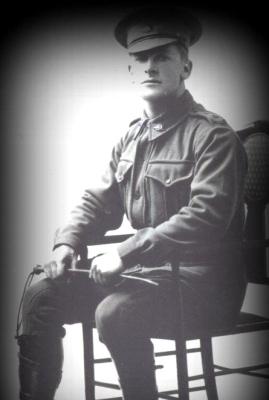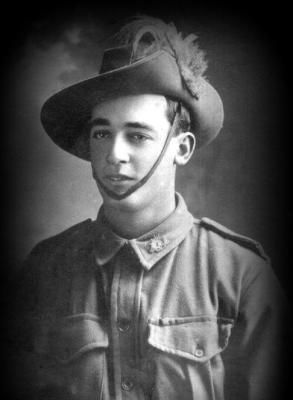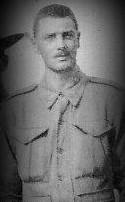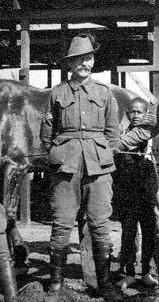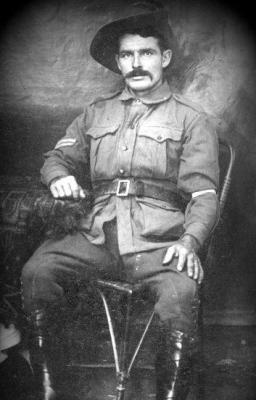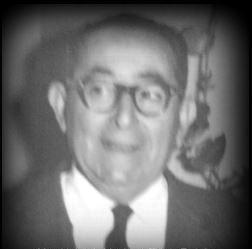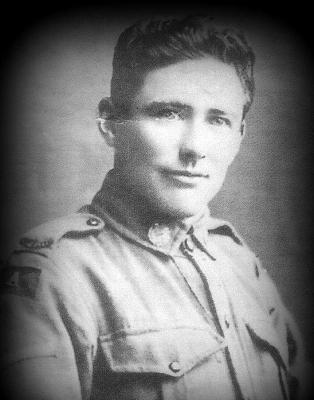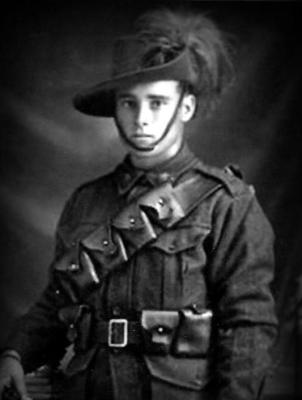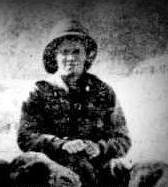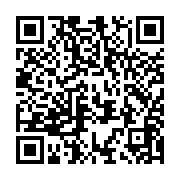World War 1, South-West Asia, Turkiye, Gallipoli, Anzac Cove, 1042 SAYERS, 10 Light Horse, 1915
Photograph of 1042 Trooper Fredrick Leslie Sayers from Busselton. Frederick Leslie ‘Les’ Sayers was born in Busselton, Western Australia on 13 December 1896. Les was the second of four sons born to Carinia Sayers who was also known as Carlo, and Flora Hasseldon Thompson. Carlo was the son of George Sayers, an expiree, and Jenny, an Aboriginal woman from Western Australia’s Vasse region.
On 13 February 1915, Les enlisted in the Australian Imperial Force (AIF) at Busselton and four days later joined the No. 8 Depot Company at the Blackboy Hill Camp Following four months training, Les embarked on the HMAT Karoola A63 with the 6th Reinforcement of the 10th Light Horse Regiment from Fremantle for Cairo, Egypt, on 25 June 1915. On 25 September 1915, he left Alexandria for the Greek island of Lemnos, arriving five days later.
Les and his unit were on Gallipoli from 26 April until evacuated from on 13 December 1915. He then continued on to Heliopolis where he spent Christmas and New Year’s before undergoing additional training at Serepeum. In March 1916 Les was admitted to 1st Australian General Hospital at Abbassia for three weeks with inflamed glands. He was discharged on 1 April and was attached to the Training Regiment at Tel el-Kebir for six weeks before transferring to the 3rd Light Horse Machine Gun Squadron, Les participated in the capture of El Arish, where the ANZAC Mounted Division and the Imperial Camel Corps overwhelmed the enemy taking 1,200 prisoners along with a quantity of horses, mules, camels, guns and ammunition. Les was with the 3rd Light Horse Machine Gun Squadron throughout 1917, during which time he undertook horse shoeing training with the 21st Veterinary Hospital at Belbeis in Egypt.
On 10 October 1917 Les entered the 2nd Australian Stationary Hospital in Moascar, the first of a series of hospitalisations alternating with duties before he embarked for Western Australia aboard the hospital ship the SS Oxfordshire on 10 July 1919, and arrived in Fremantle on 4 August. His return to Australia was acknowledged in the South-Western Times on 19 August 1919: ‘Les put in a very strenuous period in Gallipoli and Palestine with General Allenby’s troops and was in the thick of all the biggest stunts.’
Details
Details
10 Light Horse was raised as a squadron, then a regiment in October 1914.and formed part of the 3rd Light Horse Brigade in Egypt. The Regiment served dismounted in Gallipoli and fought at the charge at the Nek on 7 August 1915, and at Hill 60 on 29-30 August. The only Victoria Cross awarded to a Light Horseman recognised the valour of Lieutenant Hugo Throssell at Hill 60.
After Gallipoli the Regiment was bought up to strength to defended Egypt from the Ottoman Army advancing on the Suez Canal. Through 1916 they drove the Turks across the deserts of Sinai, participating in the battles of Romani and Magdhaba.
In 1917 as part of the Desert Column they advanced into Palestine and participated in the bloody battles to break the Gaza-Beersheba line and helped capture Jerusalem. They participated in the Es Salt Raid in May 1918. In August they were equipped with swords and retrained as cavalry. In this role they took part in the rout of the Ottoman army in the Jordan Valley, a campaign the light horse referred to as "The Great Ride". In September the 10th was the first formed regiment to enter Damascus.
Turkey surrendered on 30 October 1918. After the end of the war, the regiment saw action in putting down the Egyptian uprising of 1919. The Regiment was one of the few to return home as a formed unit.
These photographs are part of the extensive Phil Sullivan 10th Light Horse Collection donated to the Army Museum in November 2023.
The service of 13 Diggers, now honoured as Indigenous, original ANZACs, who served with the Australian Imperial Force in Gallipoli are commemorated by name in dioramas in the World war 1 Gallery at the Australian Army Museum of Western Australia.
Open in Google Maps
Nearest geotagged records:
- Postcard - St Mary's Church (0.07km away)
- Postcard - St Mary's Church (0.09km away)
- World War 2, AWAS on Rottnest - WF3050 CRAWFORD (married CARVELL) (0.31km away)
- The Old Butter Factory Building on Peel Terrace (0.45km away)
- The Old Butter Factory Precinct on Peel Terrace (0.47km away)
- Boiler House (0.48km away)
- Seaside Cottages Busselton April 1972 (1.45km away)
- Opening of Busselton CWA Holiday Home, colour, PC, (1.45km away)
Nearby places: View all geotagged records »
Australian Army Museum of Western Australia
Australian Army Museum of Western Australia
Other items from Australian Army Museum of Western Australia
- World War 1, Australia, Western Australia, 1044 SMITH, 10 Light Horse
- World War 1, Australia, Western Australia, 1046 SWEETING, 10 Light Horse
- World War 1, Australia, Western Australia, 1054 THOMPSON, 10 Light Horse
- World War 1, Australia, Western Australia, 1065 WHITFIELD, 10 Light Horse
- World War 1, Australia, Western Australia, 1084 COX, 10 Light Horse
- World War 1, Australia, Western Australia, 1089 FINLAY, 10 Light Horse
- World War 1, Australia, Western Australia, 1097 HEAD, 10 Light Horse
- World War 1, Australia, Western Australia, 1098 HARLAP, 10 Light Horse
- World War 1, Australia, Western Australia, 1099 HUTCHINS, 10 Light Horse
- World War 1, Australia, Western Australia, 1100 JONES, 10 Light Horse
- World War 1, Australia, Western Australia, 1101 KENNEDY, 10 Light Horse
- World War 1, Australia, Western Australia, 1104 Le LIEVRE, 10 Light Horse
